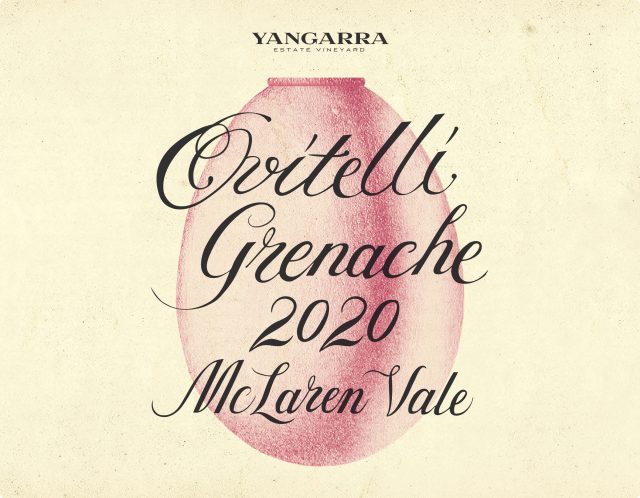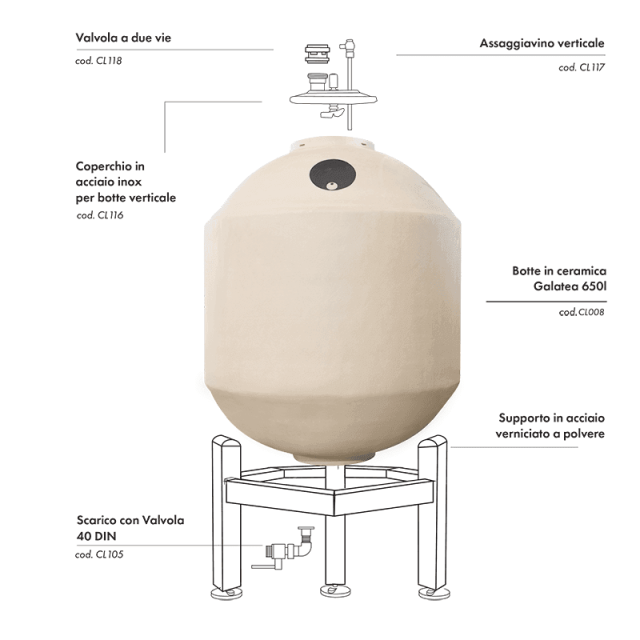This website uses cookies so that we can provide you with the best user experience possible. Cookie information is stored in your browser and performs functions such as recognising you when you return to our website and helping our team to understand which sections of the website you find most interesting and useful.
Why one Aussie winemaker is backing ceramics
When it comes to Mediterranean grapes such as Roussanne and Grenache, one Australian winemaker believes ceramic eggs are the best solution as vessels for fermentation and ageing – while dismissing concrete as “coarse”.

During a discussion on winemaking with Peter Fraser, who is head winemaker for Yangarra Estate Vineyard in the McLaren Vale, db learnt that despite the fashionable nature of concrete eggs for making wine, it’s ceramic that can be the better material.
Fraser, who was declared a Winemaker of the Year by Australian wine critic James Halliday in 2016, told db that he has been using ceramic eggs since 2013, having made the switch from oak vessels 10 years ago in a search to “tighten up” his wines.
In 2012, when he was considering new materials in which to age and ferment his wines, he recorded that “all the cool kids” were turning to concrete as a ideal material for winemaking, even though it meant turning back the clock.
“When I was working at St Hallett [in the Barossa Valley in the late 90s], one of my early jobs was waxing the concrete tanks,” recorded Fraser, commenting that such a job was necessary because the material was porous.
“At that time, we wanted to get rid of them,” he said, referring to the concrete tanks, which he said not only required a lot of work to line and clean, but also failed to yield a pristine result. “Producers stopped using concrete, because it didn’t bring clarity to their wines,” he explained.
As for the material’s resurgence in the past 10 years, he said that winemakers haven’t considered the negatives of concrete for winemaking, but are “getting caught up in the chatter of it”.
In other words, they are using the likes of concrete eggs because they are in vogue, without questioning the material’s suitability for the wine type – which varies significantly according to grape variety and source region.
For Fraser, the key beneficial property of ceramic is its low-level of porosity to atmospheric oxygen, which suits Rhône grapes in particular.
Comparing ceramic to terracotta, which is commonly used in amphorae, he said that the latter material is “very porous”, and why historically wine producers buried them in the ground – they had pores large enough to allow the wine to leak from the containers.
Concrete’s oxygen porosity is dependent on the thickness of the material, and whether or not a liner is used, but can be somewhere between ceramics and wood, with Fraser recording that a ceramic vessel has a 2% porosity, while a Bordeaux barrel is around 5% – although a larger wooden vat using thick staves of tight-grained oak could be as low as 3%.
Fraser uses 44mm thick French oak staves on puncheons (500l barrels), along with much larger foudres, as well as ceramic eggs and “one concrete egg” – which he said “I don’t like, I find it produces wines that are quite coarse”.
As for stainless steel tanks, Fraser also has strong views, telling db that he doesn’t use the material for ageing his wines because “it has no porosity, and I don’t want no porosity.”
He added, “Stainless steel also has a charge, because it’s a metal, and if you couple that to the fact there’s no porosity, then it creates this dull result.”
In contrast, during the discussion with db in London on Monday this week, Fraser championed ceramic, having opted to use a 650-litre oval vessel made by Clayver in Italy, which he said costs around AUS$8,000 (pictured below).

Such a container, however, should be used for a grape like Grenache that is prone to oxidation, he warned.
In contrast, he said, “You might want to put a Cabernet Sauvignon in a thin-stave Bordeaux barrel for more air,” before commenting, “You have to be careful with Pinot Noir and ceramic, because it will tighten up the wine, and you might need the opposite” (Pinot is prone to reduction, as opposed to oxidation).
Nevertheless, highly-acclaimed Pinot Noir winemaker, Charles Lachaux from Domaine Arnoux-Lachaux in Vosne-Romanée has, since the 2022 vintage, put all his wines in Clayver ceramic vessels, having started experimenting with them in 2020.
Fraser described Charles as “the most high-profile adopter” of the material.
Speaking more generally about his experience with ceramics and Grenache, a successful combination of material and grape that he celebrates with his label called Ovitelli (with ‘ovi’ meaning ‘egg’ and ‘telli’, ‘vital life’), he said, “Grenache is oxidative, and it can be clumsy, and ceramic brings purity, finesse and tightness, so it’s a marriage made in heaven.”
He concluded, “We have stumbled across something that really works.”
Read more

